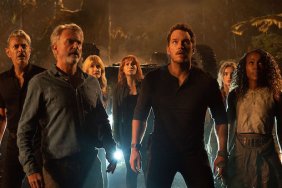Radamés “Juni” Figueroa, “.40 Living the Dream”, 2015.
Radamés “Juni” Figueroa makes work that is classic lowbrow meets highbrow, and it works so, so well. Random garbage and things thrown out of foreclosed homes become art. In his solo exhibition Rompiendo en Frío at ltd los angeles, Figueroa incorporates objects such as used air conditioners, bottle tops, a gate that lost its house, some street graffiti cut out from its original wall, and a pizza printed onto a piece of plastic. The only objects that look “purchased as new” are a basketball that’s locked into a chain link hoop using a Masterlock to keep the ball from ever falling through. The site-specificity of an imagined alleyway is recreated inside the gallery, inevitably asking viewers to consider the objects, now aestheticized, as detached from their original location. In other words: One man’s trash is another man’s treasure.
What separates Figueroa from the many artists using found materials in their work is that he’s working from the street, not the safeness of a thrift store. When someone donates their stuff to a thrift store, it’s because they believe that it still has some use value. Dropping off any used objects at a thrift, secondhand, or vintage store says that this will one day have a new owner. Leaving something out on the street doesn’t make that suggestion; it is literally saying that this is now garbage meant for no one. In the case of Radamés “Juni” Figueroa, practically everything in this show has street cred, but it’s not necessarily stuff that people left out for others to take. We viewers are left to gaze at the objects on the walls as prized or strange.

The collection of air conditioners that jut out of the walls of the gallery all have messages carved into them, like how one would imagine teenage lovers carve their names into the trunks of trees, declaring their intense love for each other, with hopes that everyone who passes by will see and remember. These are street declarations, created to both state something to the passerby.
There is something in this chill street vibe of Figueroa’s work that makes it both entirely approachable and seemingly effortless. And maybe it is, and maybe that’s what we viewers want because hard-lined abstract painting gives the sense of labor and precision, which isn’t alluring or sexy in the way that this work inevitably is.
Creating aesthetic versions of outdoor environments, or creating aesthetic environments, is something that Figueroa knows how to do. His installation at the 2014 Whitney Biennial included a makeshift structure inside the old Whitney’s sculpture garden, making a gathering space for groups of people to talk with each other, hang out, and do things that they wouldn’t otherwise do in front of works of art that demand your silent attention. In Figueroa’s work, the space itself is created for communal hangouts rather than separating people; inside the Whitney, this tropical environment made a funny juxtaposition with the coldness of the building’s Brutalist structure.
Figueroa’s work nods to Donna Huanca in his use of raw material (Huanca has also shown with ltd) and Abigail DeVille in her construction of a so-called “garbage” environment inside the gallery. Figueroa’s work is for the viewer to bask in and experience in a way that they haven’t experienced before. In doing so, however, it also realizes its aesthetic indifference to the built environment, for it is in and of itself a deconstruction of an imagined actual environment that could be found just behind the gallery.

Radamés “Juni” Figueroa’s Rompiendo en Frio continues through January 2, 2016 at ltd los angeles (7561 Sunset Boulevard #103, Los Angeles 90046).
All images courtesy of ltd los angeles.








